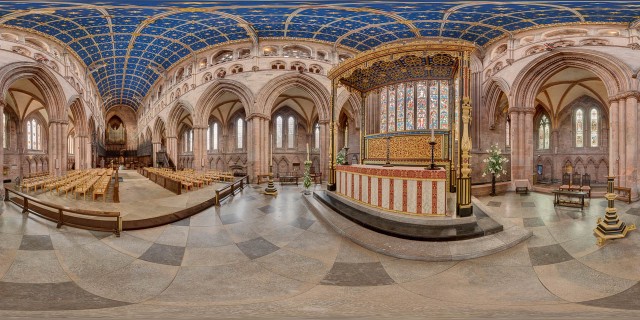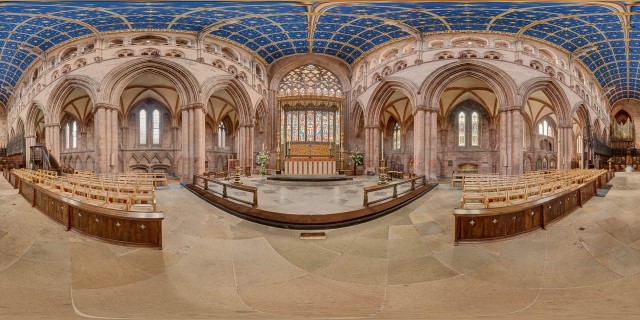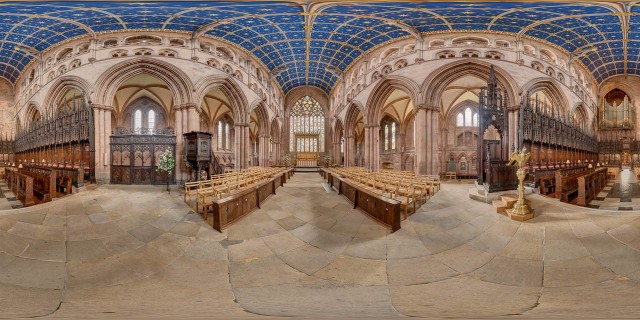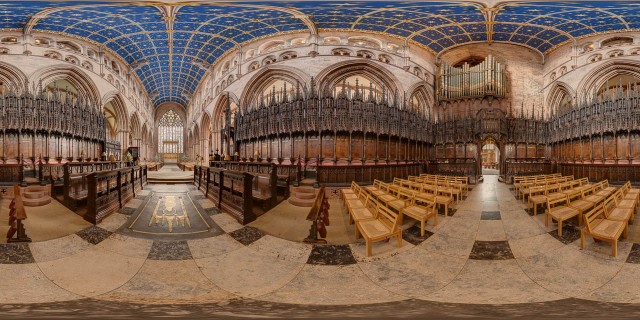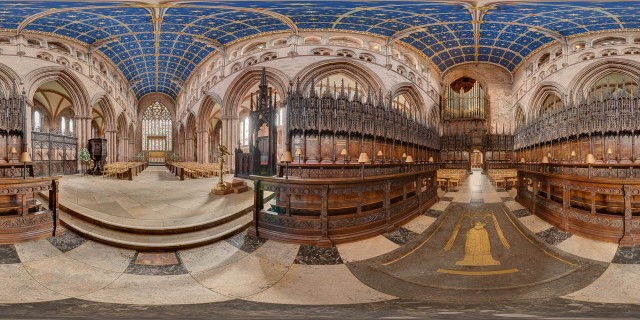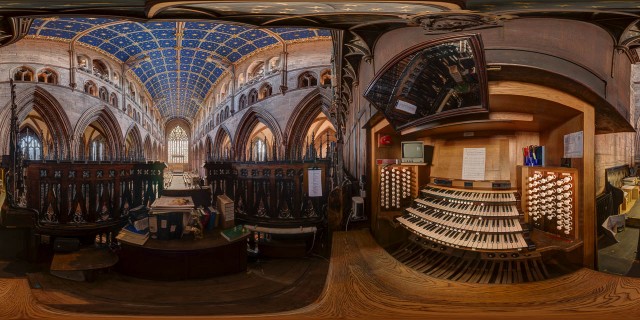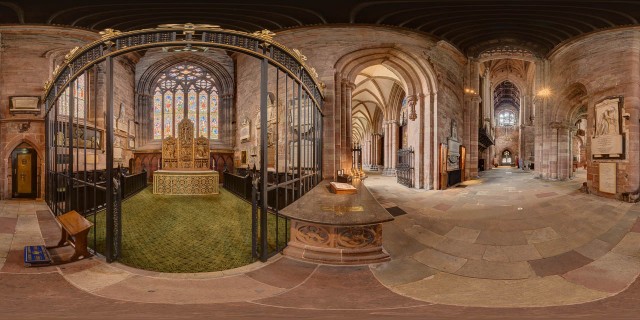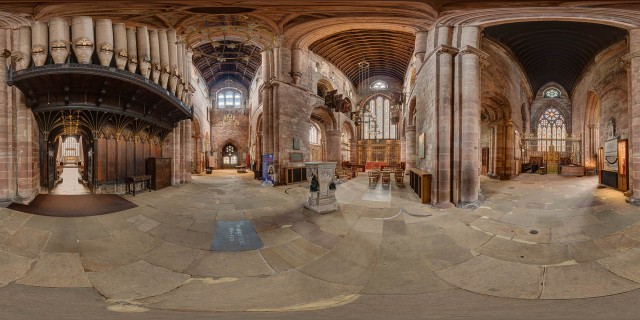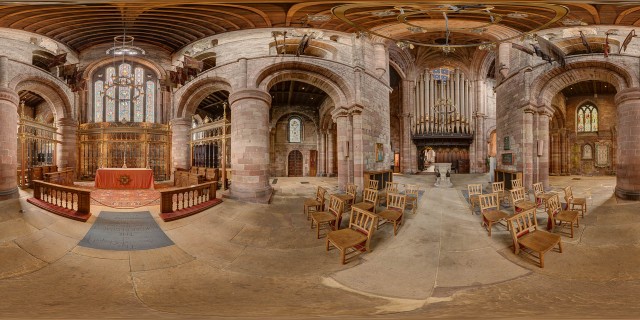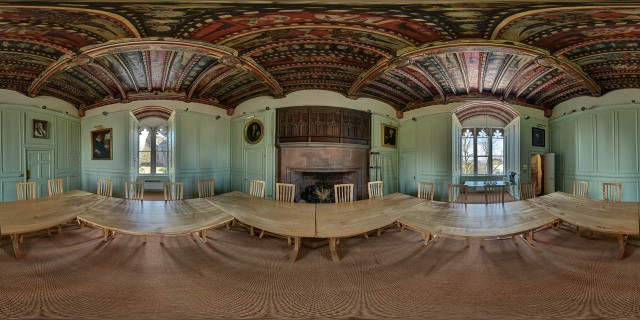Carlisle Cathedral
Carlisle Cathedral as it is informally known may be the second smallest of England’s cathedrals. It’s East window however, is the largest in the ‘Flowing Decorated’ Gothic style in England and at 51ft high and 26ft wide still contains much of the original medieval glass.
Originally founded as a Augustinian priory in 1122, it became a cathedral in 1133. One of only four Augustinian churches in England to become a cathedral.
The Gothic arcade has richly moulded arches with dog’s tooth decoration, and the twelve capitals are carved with vegetation along with small lively figures representing the labours of the months.
The ceiling or choir is a wooden barrel vault dating from the 14th century. In 1856 restoration and repainting to a new design by Welsh Architect and pioneer of modern color theory, Owen Jones, was completed.
Form without colour is like a body without a soul.
Owen Jones, 1865
Jones was a pivotal figure in the formation of the South Kensington Museum which was later to become the V&A.
46 carved wooden choir stalls with misericords were installed in the early 15th century. Misericords are hinged seats constructed to keep the monks from falling asleep while at prayers. They are carved with numerous figures and creatures.
In the south transept, the two bays of the nave are now used as the Chapel of the Border Regiment and the Chapel of St. Wilfred.
The present organ was built by Henry Willis in 1856 and enlarged in 1875 to include the 32 foot pipes. The organ has 4 manuals, 72 stops: Pedal 18 stops, Positive 14 stops, Great 13 stops, Swell 14 stops, Solo 13 stops.
It’s a greatly underrated building and well worth the time and effort to visit.
Visit the Cathedral in 360° here…
Read more at www.carlislecathedral.org.uk
Learn more at wikipedia
